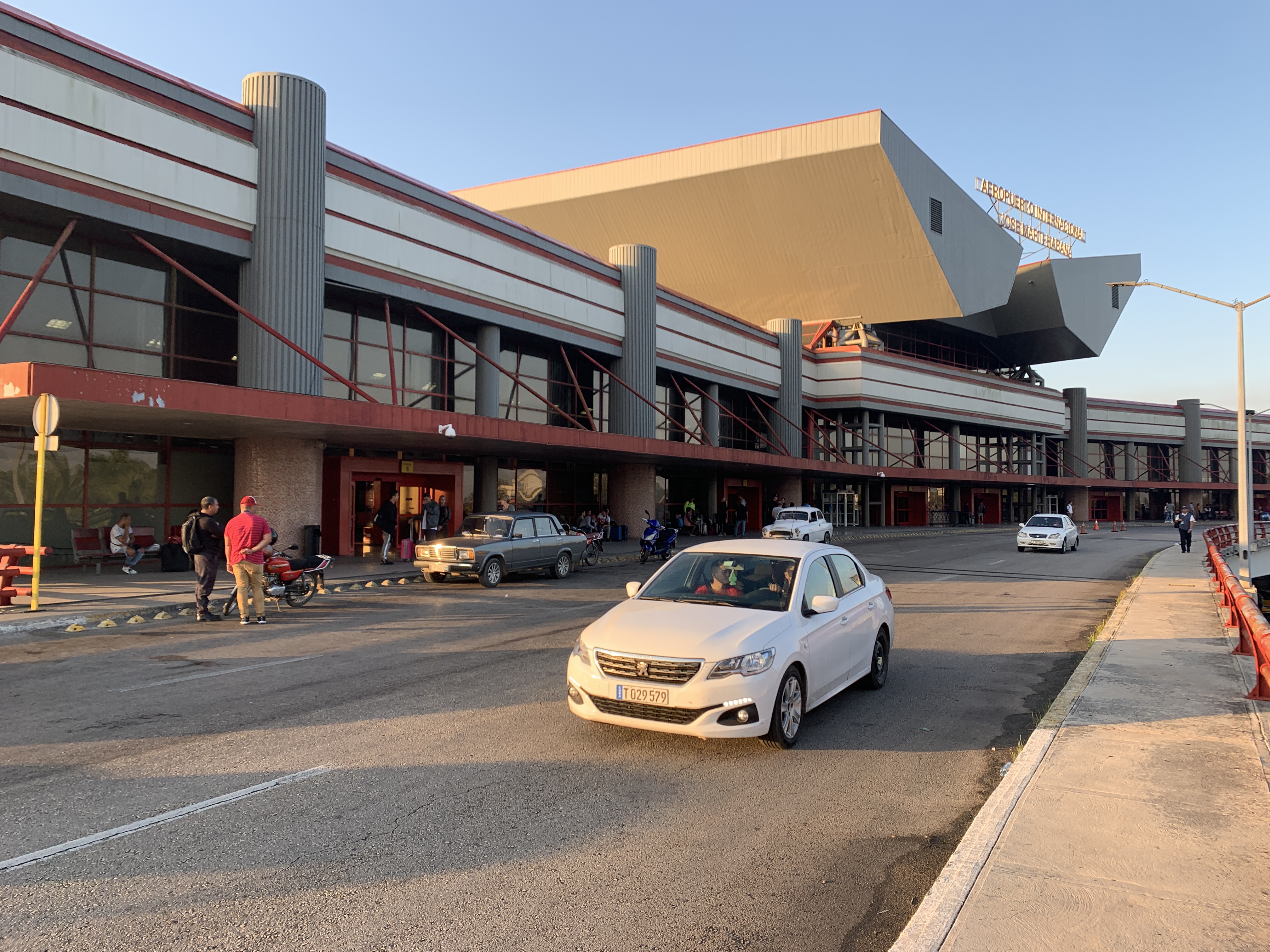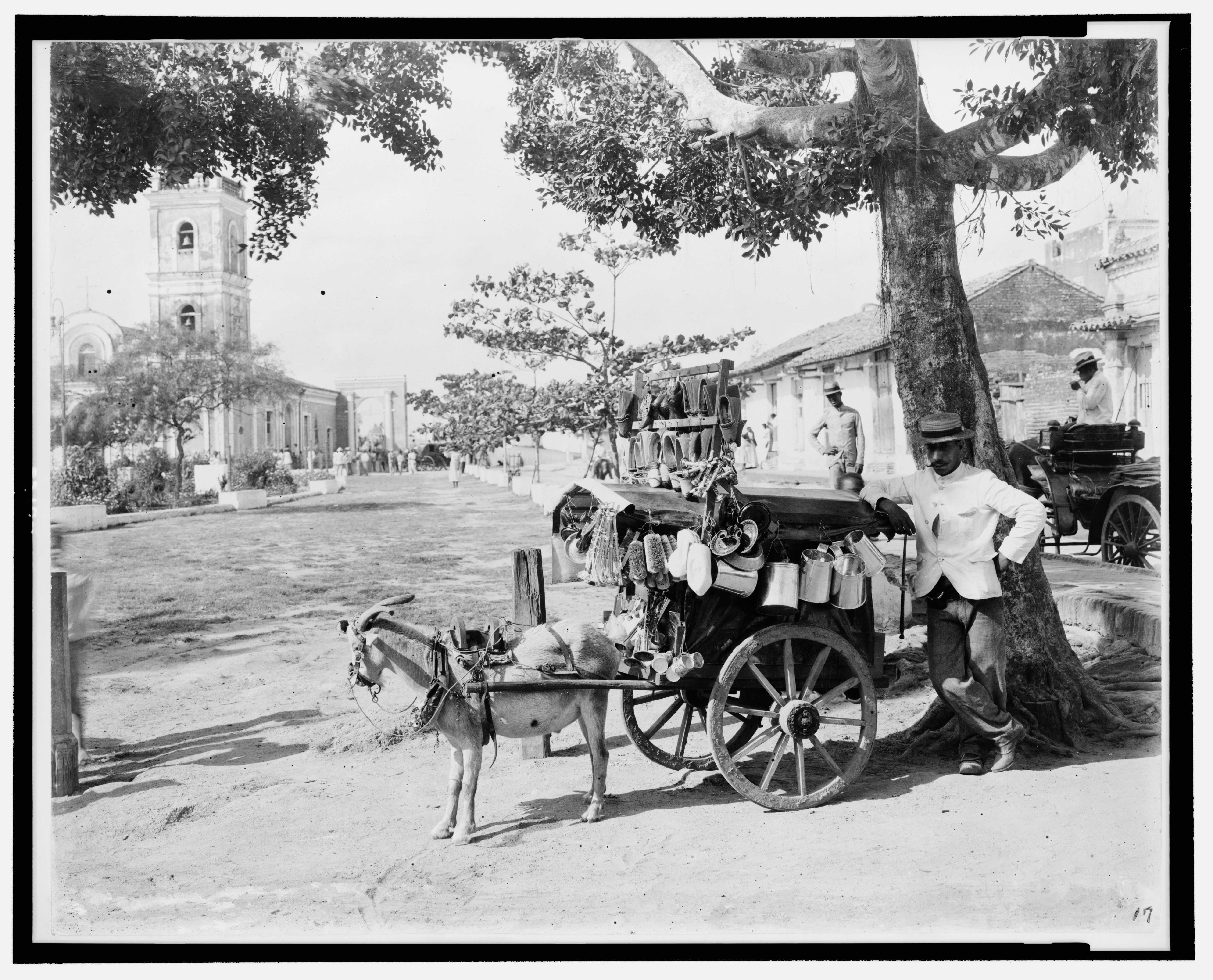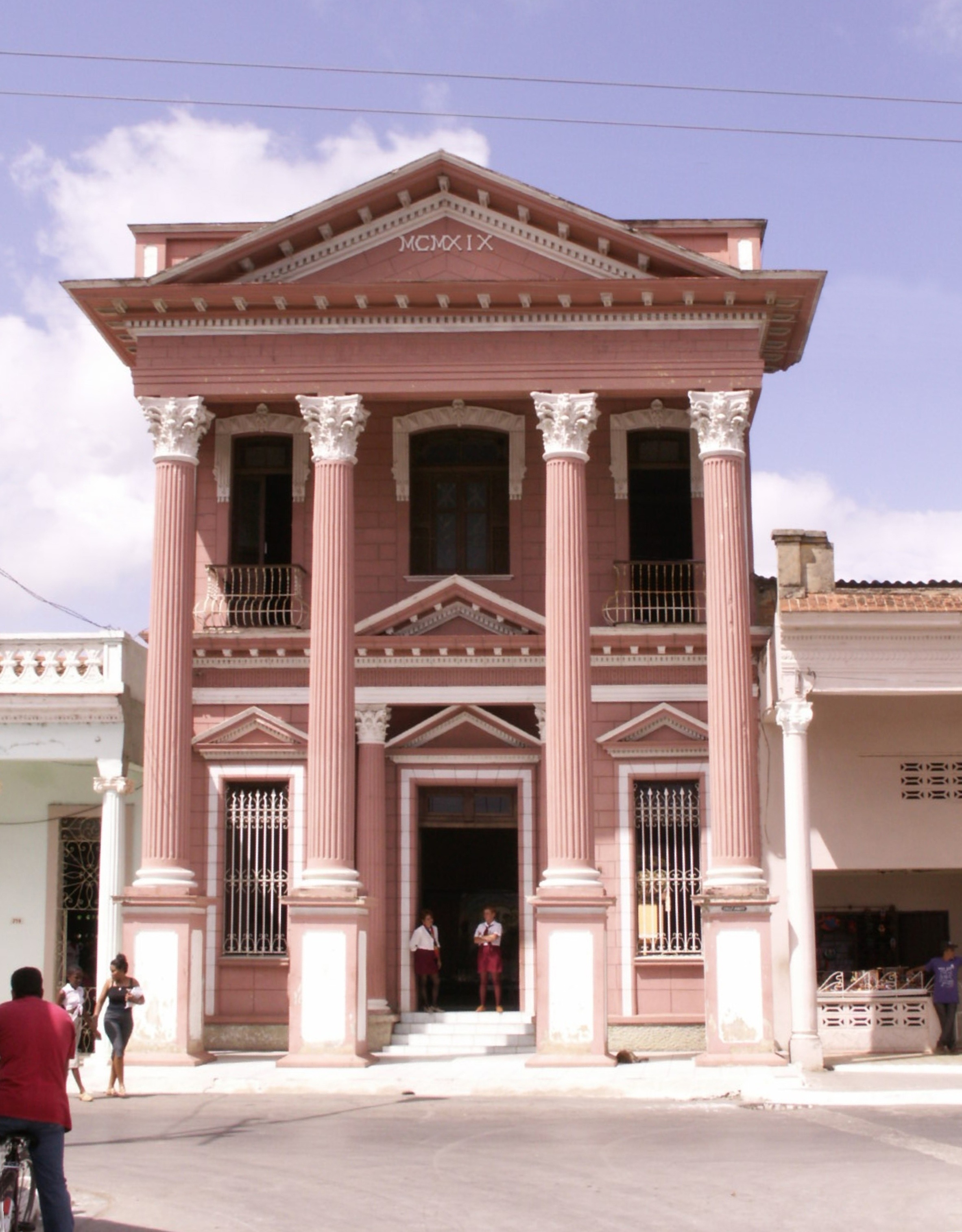|
José Martí International Airport
José Martí International Airport , sometimes known by its former name Rancho Boyeros Airport, is an international airport located southwest of the centre of Havana, Cuba, and is a hub for Cubana de Aviación and Aerogaviota, and former Latin American hub for the Soviet (later Russian) airline Aeroflot. It is Cuba's main international and domestic gateway, and serves several million passengers each year. The airport is operated by ''Empresa Cubana de Aeropuertos y Servicios Aeronáuticos'' ''(ECASA)''. The airport lies in the municipality of Boyeros and connects Havana with the rest of the Caribbean, North, Central and South America, as well as Europe. It is named in memory of patriot and poet José Martí. In the 1960-1990s the airport was used by bombardiers to send revolutionaries to Central America. Private Cuban citizens are not allowed to own aircraft; all aircraft in Cuba belong to state-owned airlines or the military. Only government- and foreign-owned aircraft are al ... [...More Info...] [...Related Items...] OR: [Wikipedia] [Google] [Baidu] |
Empresa Cubana De Aeropuertos Y Servicios Aeronáuticos
Empresa Cubana de Aeropuertos y Servicios Aeronáuticos S.A. (ECASA) is a government-owned company which operates 22 airports in Cuba, including José Martí International Airport, which serves Havana. Other responsibilities of ECASA include air traffic control, aviation safety, check-in and baggage handling. References See also * List of airports in Cuba Airports in Cuba, * Airport operators {{Caribbean-airport-stub ... [...More Info...] [...Related Items...] OR: [Wikipedia] [Google] [Baidu] |
Havana Jose Marti Airport Terminal 3
Havana (; Spanish: ''La Habana'' ) is the capital and largest city of Cuba. The heart of the La Habana Province, Havana is the country's main port and commercial center.Cuba ''The World Factbook''. Central Intelligence Agency. The city has a population of 2.3million inhabitants, and it spans a total of – making it the largest city by area, the most populous city, and the List of metropolitan areas in the West Indies, fourth largest metropolitan area in the Caribbean region. The city of Havana was founded by the Spanish Empire, Spanish in the 16th century, it served as a springboard for the Spanish colonization of the Americas, Spanish conquest of the Americas becoming a stopping point for Spanish galleons returning to Spain. ... [...More Info...] [...Related Items...] OR: [Wikipedia] [Google] [Baidu] |
Madrid
Madrid ( , ) is the capital and most populous city of Spain. The city has almost 3.4 million inhabitants and a metropolitan area population of approximately 6.7 million. It is the second-largest city in the European Union (EU), and its monocentric metropolitan area is the third-largest in the EU.United Nations Department of Economic and Social AffairWorld Urbanization Prospects (2007 revision), (United Nations, 2008), Table A.12. Data for 2007. The municipality covers geographical area. Madrid lies on the River Manzanares in the central part of the Iberian Peninsula. Capital city of both Spain (almost without interruption since 1561) and the surrounding autonomous community of Madrid (since 1983), it is also the political, economic and cultural centre of the country. The city is situated on an elevated plain about from the closest seaside location. The climate of Madrid features hot summers and cool winters. The Madrid urban agglomeration has the second-large ... [...More Info...] [...Related Items...] OR: [Wikipedia] [Google] [Baidu] |
Camagüey
Camagüey () is a city and municipality in central Cuba and is the nation's third-largest city with more than 321,000 inhabitants. It is the capital of the Camagüey Province. It was founded as Santa María del Puerto del Príncipe in 1514, by Spanish colonists on the northern coast and moved inland in 1528, to the site of a Taino village named Camagüey. It was one of the seven original settlements (''villas'') founded in Cuba by the Spanish. After Henry Morgan burned the city in the 17th century, it was redesigned like a maze so attackers would find it hard to move around inside the city. The symbol of the city of Camagüey is the clayen pot or ''tinajón'', used to capture rain water and keep it fresh. Camagüey is also the birthplace of Ignacio Agramonte (1841), an important figure of the Ten Years' War against Spain. A monument by Italian sculptor Salvatore Buemi, erected in the center of the area to Ignacio Agramonte, was unveiled by his wife in 1912. It is composed of a ... [...More Info...] [...Related Items...] OR: [Wikipedia] [Google] [Baidu] |
Morón, Cuba
Morón is a city and a municipality in Ciego de Ávila Province in central Cuba. It is one of ten municipalities in the province, and is the second in importance and the oldest. Morón is the closest city to the tourist resorts on Cayo Coco and Cayo Guillermo. Geography The municipality is located north of the city of Ciego de Ávila, bordering the Bolivia municipality to the east, Chambas to the west, the Bay of Buena Vista and the Jardines del Rey to the north and the Ciro Redondo municipality to the south. The terrain is mostly plain, with small hills to the north, made up of salt domes. The north shore is covered by marshes. Morón has the largest natural water mirror in Cuba, Laguna de Leche, of . Cayo Coco and Cayo Guillermo, two of the cays of Jardines del Rey archipelago is located north of Morón, across the Bay of Dogs (''Bahia Perros''). Previously the municipality was much larger, being one of nine in the previous province of Camagüey. In 1943, it was divide ... [...More Info...] [...Related Items...] OR: [Wikipedia] [Google] [Baidu] |
Santa Clara, Cuba
Santa Clara is the capital city of the Cuban province of Villa Clara Province, Villa Clara. It is centrally located in the province and Cuba. Santa Clara is the List of cities in Cuba, fifth-most populous Cuban city, with a population of nearly 250,000. History Santa Clara was founded by 175 people on July 15, 1689. 138 of them represented two large families already living in the area, who owned land next to the new city. The other 37 came from seven other families and included a priest and governor, all originating in the coastal city of San Juan de los Remedios. The population of Remedios, Cuba, Remedios had to choose between leaving their city, constantly being besieged by pirates, or staying. While most decided to stay, 37 people traveled south to the interior. On June 1, 1689, they arrived at a hill, joining two other families already present at the site. According to tradition, a mass was celebrated under a tamarind tree and Santa Clara was founded. Since then, the pla ... [...More Info...] [...Related Items...] OR: [Wikipedia] [Google] [Baidu] |
Ford Trimotor
The Ford Trimotor (also called the "Tri-Motor", and nicknamed the "Tin Goose") is an American three-engined transport aircraft. Production started in 1925 by the companies of Henry Ford and ended on June 7, 1933, after 199 had been made. It was designed for the civil aviation market, but also saw service with military units. Design and development In the early 1920s, Henry Ford, along with a group of 19 other investors including his son Edsel, invested in the Stout Metal Airplane Company. Stout, a bold and imaginative salesman, sent a mimeographed form letter to leading manufacturers, blithely asking for $1,000 and adding: "For your one thousand dollars you will get one definite promise: You will never get your money back." Stout raised $20,000, including $1,000 each from Edsel and Henry Ford. In 1925, Ford bought Stout and its aircraft designs. The single-engined Stout monoplane was turned into a trimotor, the Stout 3-AT with three Curtiss-Wright air-cooled radial engine ... [...More Info...] [...Related Items...] OR: [Wikipedia] [Google] [Baidu] |
Santiago De Cuba
Santiago de Cuba is the second-largest city in Cuba and the capital city of Santiago de Cuba Province. It lies in the southeastern area of the island, some southeast of the Cuban capital of Havana. The municipality extends over , and contains the communities of Antonio Maceo, Bravo, Castillo Duany, Daiquirí, El Caney, El Cobre, El Cristo, Guilera, Leyte Vidal, Moncada and Siboney. Historically Santiago de Cuba was the second-most important city on the island after Havana, and remains the second-largest. It is on a bay connected to the Caribbean Sea and an important sea port. In the 2012 population census, the city of Santiago de Cuba recorded a population of 431,272 people. History Santiago de Cuba was the fifth village founded by Spanish conquistador Diego Velázquez de Cuéllar on July 25, 1515. The settlement was destroyed by fire in 1516, and was immediately rebuilt. This was the starting point of the expeditions led by Juan de Grijalba and Hernán Cortés to the ... [...More Info...] [...Related Items...] OR: [Wikipedia] [Google] [Baidu] |
Ciudad Libertad Airport
Ciudad Libertad Airport is a defunct airport near Havana, Cuba. and formerly known as El Aeropuerto de Columbia. Located in the borough of Playa, it was Cuba's main airport until 1930, when it was replaced by José Martí International Airport. The airport was also the location of the 1960 Cuban Grand Prix. Two days prior to the Bay of Pigs Invasion in 1961 the airport was bombed by US planes. at sierramaestra.cu It previously had two runways, but only one remains. It is now a school. Facilities The former airport resides at an of above |
Vuelta Abajo
Vuelta Abajo (or Vueltabajo, literally: The lower roundtrip) is a geographic region in the Pinar del Río Province of Cuba. It lies in the extreme western part of the island, bordered on the north by the Sierra de los Órganos mountains. on EcuRed It is one of the five tobacco regions of Cuba.Tobacco Regions of Cuba : rudimentary map and some additional infos at Habanos S.A. webpage [...More Info...] [...Related Items...] OR: [Wikipedia] [Google] [Baidu] |
Batabanó, Cuba
Batabanó is a municipality and town in the Mayabeque Province of Cuba. It was founded in 1688. History Until the 1977 administrative reform, the municipality was divided into the barrios of Pueblo de Batabanó, Surgidero, Camacho, Pozo Redondo, La Julia and Sopapo. Geography The municipality is crossed by a number of small rivers, among them Río Guanabo, Río San Felipe, Río Pacheco, Río San Juan and Río Santa Gertrudis. The Batabanó cays, developed in the sea south of the community are part of the Canarreos Archipelago. Batabanó's territory is bordered by the Caribbean Sea and by the municipalities of Güira de Melena (in Artemisa Province), Quivicán, San José de las Lajas and Melena del Sur. It includes the villages of 13 de Marzo, Camacho, El Sopapo, La Gía, La Julia, La Serafina, Pedroso, Pozo Redondo, Santa Barbara, Santa Lucia, Surgidero de Batabanó and Zayas. Demographics In 2004, the municipality of Batabanó had a population of 25,664. With a total area o ... [...More Info...] [...Related Items...] OR: [Wikipedia] [Google] [Baidu] |
Droving
Droving is the practice of walking livestock over long distances. It is a type of herding. Droving stock to market—usually on foot and often with the aid of dogs—has a very long history in the Old World. An owner might entrust an agent to deliver stock to market and bring back the proceeds. There has been droving since people in cities found it necessary to source food from distant supplies. Description Droving is the practice of moving livestock over long distances by walking them " on the hoof". Droving is used for moving large herds over long distances, sometimes several hundred kilometers. It was carried out by shepherds. The earliest written evidence about shepherds and their dogs dates back to the 14th century. Thousands of cattle were moved along the roads of Europe and Great Britain, and later sheep, goats, pigs and even geese and turkeys. The journey from pasture to market, slaughterhouse, or buyer could take anywhere from a few weeks to a few months. The herd moved ... [...More Info...] [...Related Items...] OR: [Wikipedia] [Google] [Baidu] |








